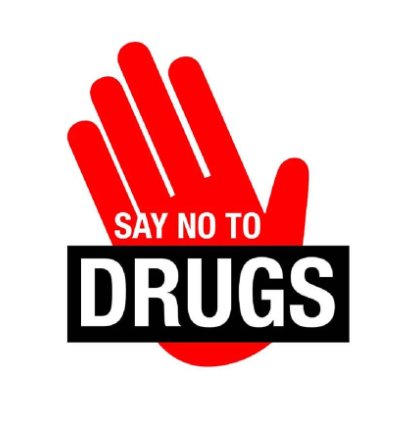International Day against Drug Abuse and Illicit Trafficking 2020: Say No To Drugs!

The first International Day against Drug Abuse and Illicit Trafficking was observed by the UN General Assembly on June 26, 1987. Since then, every year, this day marks the coherent and seamless global cooperation to achieve a drug-free society. So far, the UN has organized three international conventions in 1961, 1971 and 1988.
The first one sought to eliminate the illicit production and non-medical use of opioids, cannabis and cocaine. The meeting held in 1971 extended the scope to the psychotropic medications or synthetic drugs (e.g., amphetamines, barbiturates and LSD). The third convention against illicit trafficking was targeted at the suppression of the illegal global market, and the restriction was also extended to the precursor chemicals.
During the last five decades, the United Nations has also convened two special sessions to discuss the world drug problems, in 1998 and 2016. In the first session, the UN envisioned to reduce the illicit supply and demand for narcotics and synthetic drugs by 2008. However, the World Drug Reports rather showed an increase in the use of the illicit drugs.
A gross disparity in the access to narcotic drugs among various nations across the globe also became apparent.
Through a former annual report by United Nations-backed International Narcotics Control Board (INCB), it has been reported that India is one of the major hubs for illicit drug trade; whether it’s the classic cannabis to newer synthetic opioids like tramadol, and designer drugs like methamphetamine. In fact, cannabis remains the most frequently seized narcotic drug in South Asia; cannabis herb was the drug seized in largest quantities across the region.
India alone accounted for six per cent of the world’s cannabis herb (ganja) seizures in 2016 (nearly 300 tonnes), and reported seizing even higher quantities in 2017 (353 tonnes) — a 20 per cent increase compared to 2016, the report by UN office of Drugs and Crime said.
The report further says that the global trend of purchasing drugs over the Internet, particularly on ‘darknet’ trading platforms using cryptocurrencies has already spread across South Asia, including India. South Asia also remains a target for traffickers smuggling illicitly produced opiates from Afghanistan to Europe and North America along the alternative part of the “southern route”, which runs through Pakistan (or the Islamic Republic of Iran) and, via the Gulf countries, continues to East Africa and on to the destination countries.
The ‘alternate’ southern route bypasses the Gulf countries and uses South Asia as a stopover for opiates being supplied directly to the Canadian market by air, or through Africa to Europe.
Opiates, cannabis and amphetamine-type stimulants remain the main substances of concern in the region, with record levels of cannabis herb seized in Bangladesh and India in 2017, said the report.
The National Mental Health Survey (2015-2016) showed a treatment gap of >70 per cent for drug use disorders. The recent nation-wide survey on substance use disorders has replicated the result, with nearly 75 per cent treatment gap for drug use disorders. Added to that misery, merely five per cent of people with illicit drug use disorders received inpatient care19.
This large treatment gap indicates;
- poor accessibility
- utilization
- quality of health care
To meet this unmet need, one should expand the treatment and rehabilitation facilities for substance use disorders. The DTC scheme by the Ministry of Health and Family Welfare is for sure, a starting point.
But is this enough?
Drug abuse has led to a detrimental impact on the society. It has led to increase in the crime rate. Addicts resort to crime to pay for their drugs. Drugs remove inhibition and impair judgment egging one on to commit offences. Incidences of teasing, group clashes, assault and impulsive murders increase with drug abuse. Apart from affecting the financial stability, addiction increases conflicts and causes untold emotional pain for every member of the family. The Narcotic Drugs and Psychotropic Substances Act, 1985, were enacted with stringent provisions to curb this menace. The Act envisages a minimum term of 10 years imprisonment extendable to 20 years and fine of Rs. 1 lakh extendable up to Rs. 2 lakhs for the offenders.
Increase in incidences of HIV, hepatitis B and C and tuberculosis due to addiction adds the reservoir of infection in the community burdening the health care system further. Women in India face greater problems from drug abuse. The consequences include domestic violence and infection with HIV, as well as the financial burden. India has braced itself to face the menace of drug trafficking both at the national and international levels. Several measures involving innovative changes in enforcement, legal and judicial systems have been brought into effect.
Current and future challenges in the supply reduction arm lie in the early detection and scheduling of the new psychoactive substances.
Another published report of the International Narcotic Control Board (INCB) revealed India's threat to mephedrone and captagon (a derivative of amphetamine and theophylline)24. The Report also discussed the country's potential problem with the precursor chemicals. Moreover, it has noted with caution the rapid proliferation of internet-based pharmacies and bitcoin-based transactions for the illicit drug use in India. Misuse of the over-the-counter medications with definite (e.g., benzodiazepines, tramadol and codeine) or with possible addictive potential (e.g., pregabalin) is another concern, voiced by the international forum.
In summary, India has taken early and decisive steps to address drug problems. But it would take adequate blueprint, committed workforce and several dedicated programmes and policies at its disposal which should be as good in implementation as on paper!















































